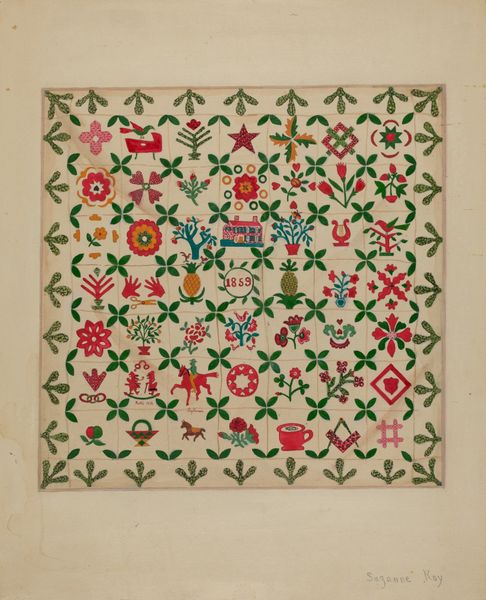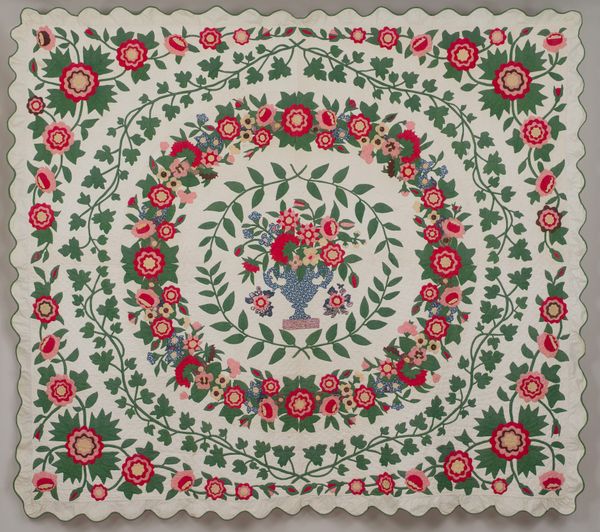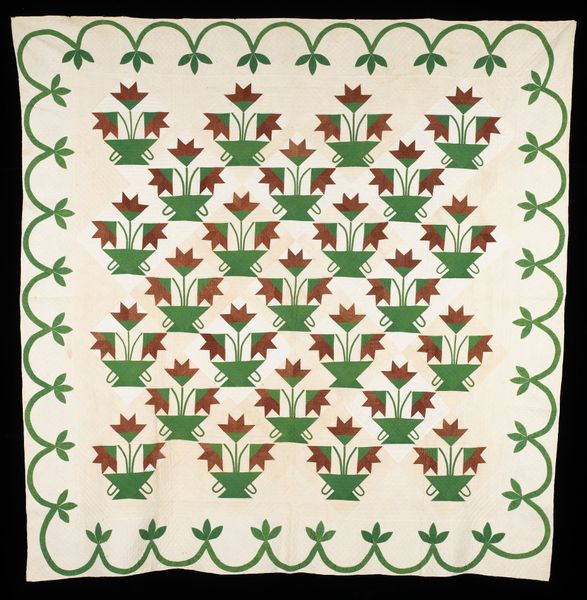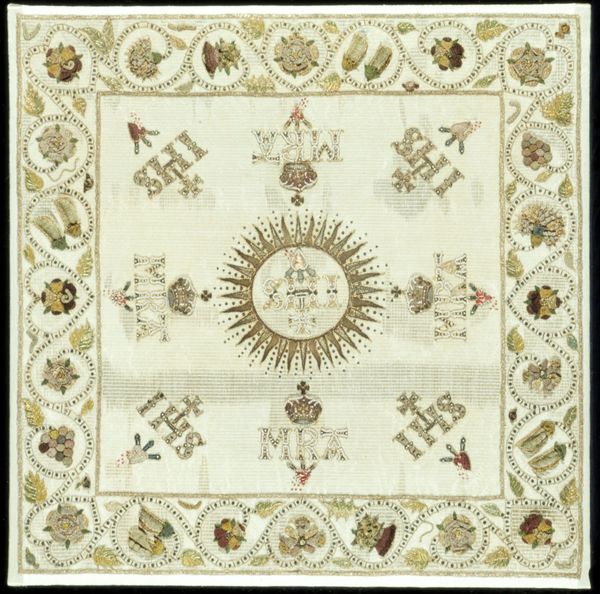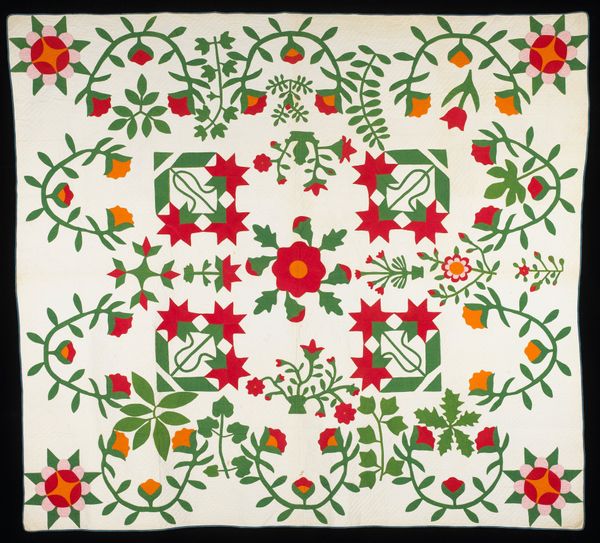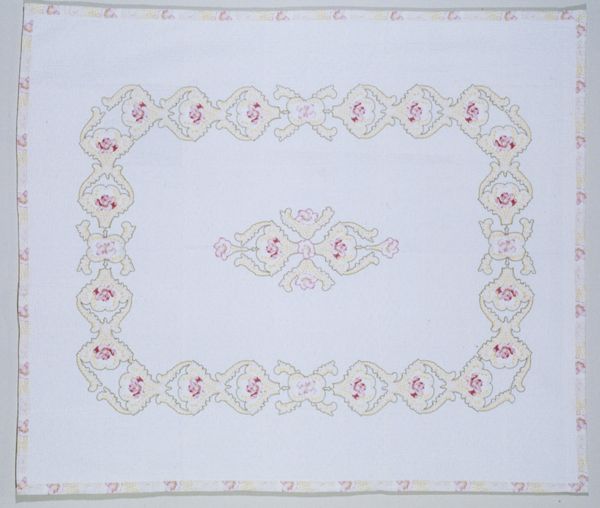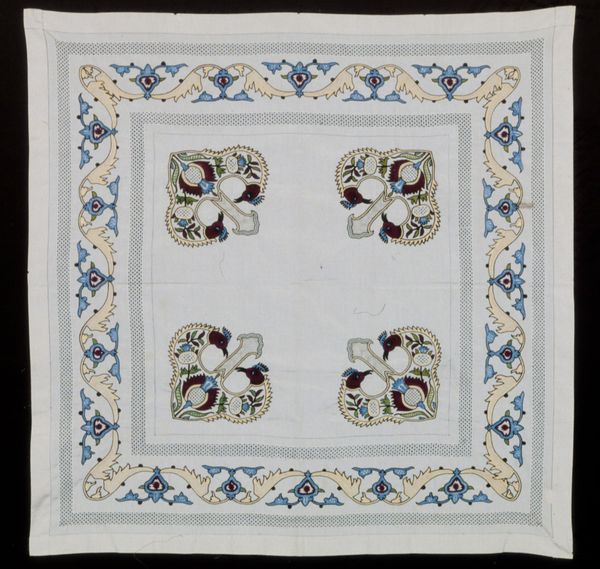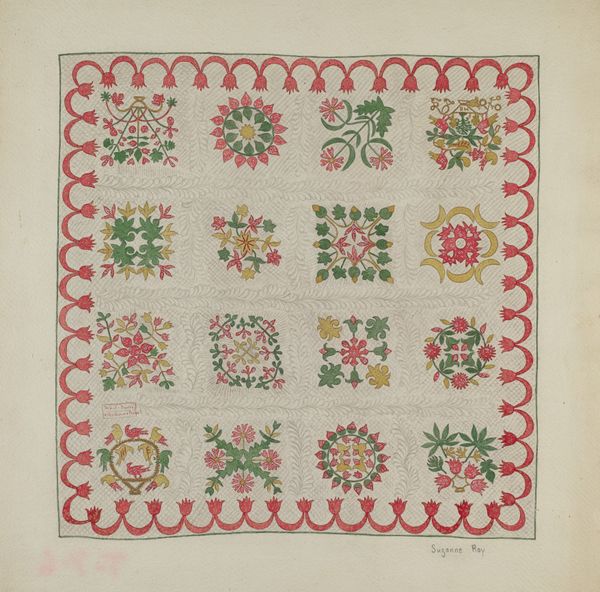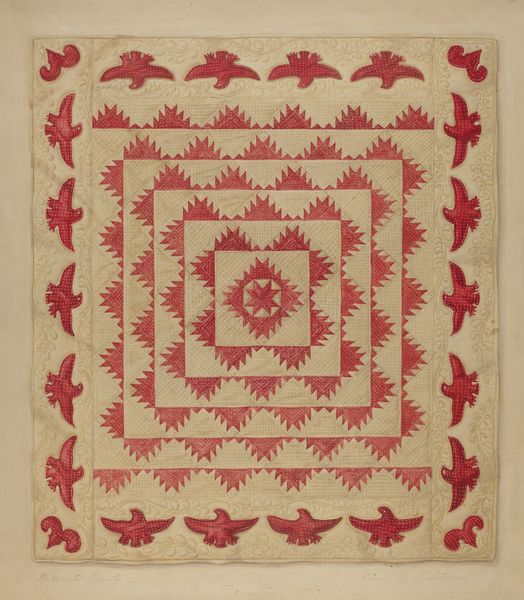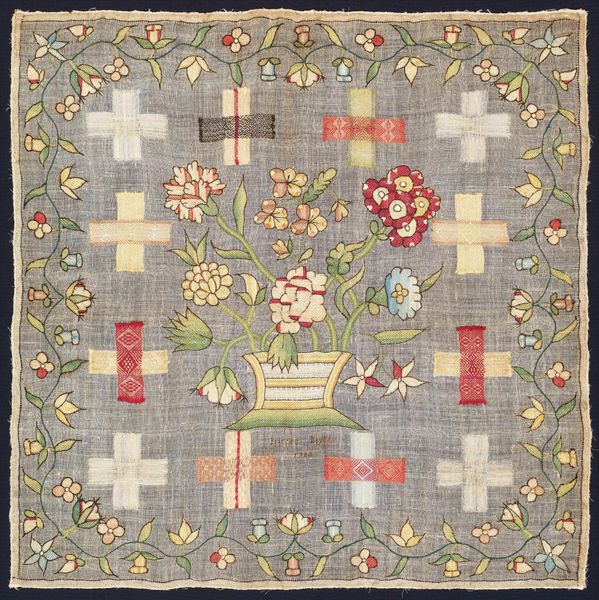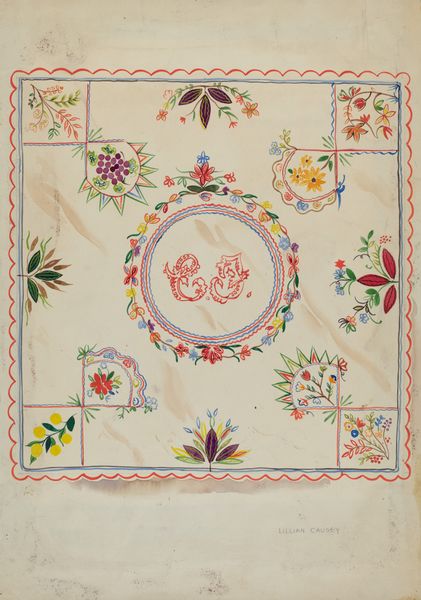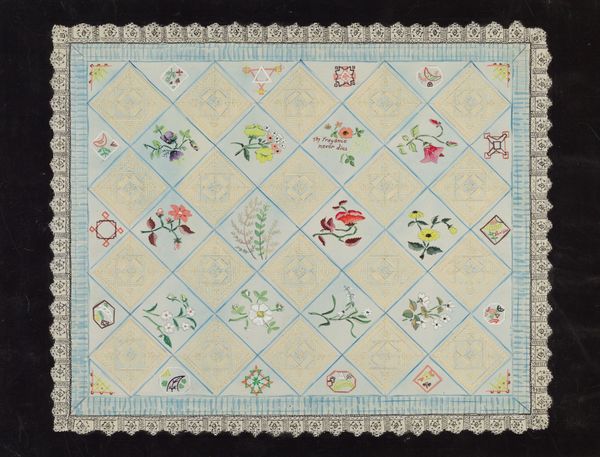
fibre-art, textile, cotton
#
fibre-art
#
folk-art
#
textile
#
folk-art
#
organic pattern
#
cotton
#
decorative-art
Copyright: Public Domain
Editor: We're looking at a "Rose of Sharon" quilt from around 1850. It's cotton, so textile art, and it’s part of the decorative arts. It reminds me a bit of folk art, with its repeating rose patterns. What sort of significance do you see in the imagery chosen here? Curator: The rose, particularly the “Rose of Sharon,” often embodies ideas of love, beauty, and perhaps even paradise within American material culture of that era. It might signify more than domestic artistry; were these roses signifiers of cultural memory, perhaps of homelands left behind or a connection to the divine? Editor: Homelands left behind? How so? Curator: Textiles like this were often made by women, frequently within communities experiencing displacement or migration. Quilts became a way to preserve identity through symbols. The roses could speak of a yearning for roots, continuity and beauty amidst upheaval. Do you notice anything else about the imagery that suggests a deeper meaning? Editor: Well, I see the border has little birds, and they’re all moving in different directions. Could that be related? Curator: Exactly. The birds may not only symbolize freedom or movement but also different paths, perhaps referencing individual journeys within the larger context of community and shared heritage. The direction of the bird could suggest migration and navigation through life changes. Perhaps these women pieced together not just fabric but memories. Editor: I never would have thought of a quilt having such a rich and thoughtful significance. Thanks so much. Curator: My pleasure. Quilts are beautiful artifacts with layers of emotional significance sewn into every stitch, offering potent reminders of the people who made them and their lives.
Comments
minneapolisinstituteofart almost 2 years ago
⋮
Quilts such as this Rose of Sharon pattern with a fruit and bird border were often made to celebrate special occasions such as a wedding and were given as a gift or were part of a dowry. In general, they did not serve as an everyday bed cover but were displayed on holidays and for other celebrations. It is possible that this quilt was made in upstate New York as that is where the donor's grandfather served as a Presbyterian minister.
Join the conversation
Join millions of artists and users on Artera today and experience the ultimate creative platform.

